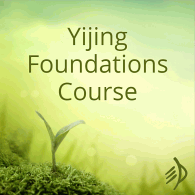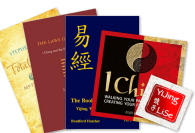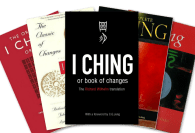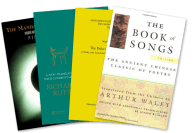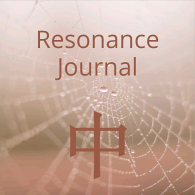A story in three parts?
I’ve mentioned before that there’s a pattern in the Zhouyi of concepts or images showing up in threes: three pots, three almost-full moons, three raids that are marital allies, not robbers, and so on. And there are also three zhang 章: in lines 2.3, 44.5 and 55.5.
‘Containing a thing of beauty: this allows constancy.
Maybe engaged in a king’s business –
Without accomplishment, there is completion.’‘Using willow to wrap gourds.
Containing a thing of beauty,
It comes falling from its source in heaven.’‘A thing of beauty coming.
Brings reward and praise, good fortune.’
Only a zhang, that ‘thing of beauty’, is something of a mystery object. In Wilhelm/Baynes it becomes ‘lines’ (two sets of ‘hidden lines,’ then ‘lines are coming’ in 55.5); Field has ‘the pattern holds’ when zhang is hidden, but then substitutes ‘Shang’ for zhang at 55.5 so he can translate ‘he comes to Shang’. Lynn has ‘effaces his own prominent qualities,’ ‘harbours beauty within,’ and finally ‘this one arrives here and manifests himself’. Bradford Hatcher: ‘Restraint in display,’ ‘restraint is displayed,’ and ‘the pattern emerges’. And one more: Deng Ming Dao, ‘hide your talents,’ ‘held in place’, and ‘receiving the seal’.
According to various dictionaries, zhang means…
- splendid, distinguished
- obvious, apparent
- elegant, well-made
- a stanza of poetry or section of a musical composition
- customs, law, institution
- a moral example
- the blazon on a standard
- the insignia of court officers
Originally, it was (probably) one half of a jade gui tablet, which might be bestowed on you as token of your royal authority for a mission. (There’s no agreement on the character’s etymology: Sears says it’s a speaking mouth plus the number ten; the Pleco dictionary says it’s jade and the chisel to work it.)
All of which gives a clear sense of a theme, but not a unitary translation.
Exploring 44.5, I found,
In the Shijing, the Book of Songs, this word means variously the blazon on a flag, finely woven cloth, elegant speech, gold and jade ornaments, ancient statutes, the laws or the personal example given by a great ruler, and the form of the Milky Way in the heavens.
The simplest thing I can say about all these is that they’re meant to be seen. Going back to the original idea of a jade token of authority, being seen is really the entire point.
And yet in 2.3 and 44.5, this beautiful thing is han 含: literally, held inside the mouth; by extension, contained and concealed, like life force in the grain (or in the human). From early times, han meant keeping your mouth shut and concealing your feelings.
This seems to me a really extraordinary thing to do with a blazon, or insignia, or personal example, or law, or musical composition… let alone with a jade token of authority. What could possibly be happening here? And when the zhang concealed in 2.3 and 44.5 ‘comes, bringing reward and praise’ in 55.5, what story is being told?
(Note: some translators escape the paradox by saying a jade baton is being held in front of the mouth to hide it when speaking to the king. I’m not convinced at all – not when han specifically means holding something inside the mouth. Han was actually used in the Liji for the practice of putting jade in the corpse’s mouth to ensure a good afterlife.)
Line by line…
2.3 changing to 15
‘Containing a thing of beauty: this allows constancy.
Someone engaged in the king’s business –
Without accomplishment, there is completion.’
The inner logic and contrasts of this line seem fairly clear. Containing the zhang makes constancy possible: you can persist, find truth and carry it through, because that shining sign is hidden away. And then in parallel, if you’re doing the king’s work, you can bring it to an end (‘allows constancy’), though without accomplishment (because the zhang is hidden?).
What could this actually mean in practice?
Zhang is a word that requires context to narrow down its meaning – which naturally makes it perfect for use in an oracle, where each individual reading provides its own context. This line adds a little context of its own, though, with the king’s work – something you might well do with a zhang that is half a jade gui, the token of mandate and personal authority.
Maybe hiding the token is why there is no ‘accomplishment’. ‘Accomplishment’ means specifically completed work: the house is built, the cloth is woven, the war is won. It’s not just that we finished working, but the work itself is finished. ‘Completion’ means simply the end of a period of time: you came through it.
And… ‘completion’ is a key word in 15, Integrity, the hexagram revealed when 2.3 changes:
‘Integrity creates success.
The noble one completes it.’
And 15.3, changing back to 2:
‘Toiling with integrity.
A noble one completes it.
Good fortune.’
The noble one of 15 stays in his lane, does the work there is for him to do, isn’t worried about how it will look – and this is consistently described as a recipe for success. The Tuanzhuan for 15, its commentary on the oracle/judgement text, suggests why:
‘It is the way of heaven to decrease the arrogant and to augment the humble.
It is the way of earth radically to change the arrogant and to flow into the humble.
The souls and spirits harm the arrogant and bless the humble.
It is the way of people to hate the arrogant and to love the humble.’
Perhaps this is why hiding the shining zhang allows constancy, by leaving space to receive blessing, not being so ‘full of yourself’ (the literal meaning of ‘arrogant’ is ‘full to overflowing’) as to excite antagonism.
Tradition generally agrees that this line is about concealing one’s talents – think of the English expression, ‘swallow your pride’. I’ve found it can also mean not broadcasting your plans, not using your insights to win the argument, or specifically hiding the full extent of your authority in the situation (even, or especially, when insisting on it seems like the obvious shortcut to achieve your goals). The trigram kun here is becoming gen, mountain: putting a lid on things.
So at the end of the story, you will have no accomplishment, nothing ‘to show for it’, and quite possibly no-one will know you got anything done. But you will have come through, and stayed loyal. My experience of the line has been that you do attain your ends, though I wonder whether that’s always the case: the goal might need to be redefined.
44.5 changing to 50
‘Using willow to wrap gourds.
Containing a thing of beauty,
It comes falling from its source in heaven.’
The sheer brilliance of the imagery of this line, the perfect way it shows the meeting of Coupling with the Vessel, makes me fall in love with this book all over again.
So… this line looks to Hexagram 50, the Vessel. That is, it’s looking to create something very like a zhang: a complete and beautifully crafted work of art that makes tangible the spiritual authority of the new regime. But it is the fifth line, the decisive moment, of Coupling, the hexagram of the disruptively powerful woman, not to be married because such a marriage could not last. There is too much energy here for the structures available – nothing that will be neatly contained. And whatever had seemed complete and settled before has just been opened up and brought into question. In such a time, meeting with all this unpredictable, uncontrollable, unassimilable power, how can anyone start thinking about casting a vessel?
Answer: by creating a gourd vessel, one that is not cast in a mould, but grows into one.
The changing line shows this happening with something like stop-motion animation, as the inner solid line of the upper trigram qian opens up and creates the gourd’s hollow interior. (Not the only line where this happens.)
How to make a gourd vessel
A bottle gourd actually grows into a usable bottle shape on its own: you need only wait very patiently for it to ripen and then dry out fully. You would still use a willow wrapping to cushion the brittle gourd and to give it a handle/ hanging loop.
But to create the vessel shape you want, you can’t start with a mature gourd: you need to shape it as it grows. Since the Qing Dynasty at least – and maybe earlier, who knows? – there has been a technique of enclosing the small, growing gourd in a two-part mould, so it would grow into the chosen shape.
You could create the mould by a process quite similar to casting a bronze vessel: make the shape you want from clay, bake it hard, then layer clay on top of this to make a reverse-image mould. To make a bronze vessel, you bind the two halves of the mould together with spacers inbetween, bury them to hold them in place, and pour in molten metal. To make a simple gourd bottle, you bind the mould firmly to your growing gourd. If all goes well, then after many months of growth you will be able to remove the mould and reveal the finished product… the zhang?
As I scoured the internet to learn more about this, I came across a truly fascinating article about a modern gourd artist, and his process of mastering the mould technique. Nowadays, apparently, he uses ropes and cords to shape the growing gourds. I wonder if the flexibility and strength of willow withies would be more useful than reinforcement with steel?
In 2001, Kung ordered a mold of the bodhisattva Kuanyin, with which he planned to shape a growing gourd. But the melon refused to co-operate, and burst through the steel-reinforced plaster mold by a good ten centimeters. This illustrated to Kung the resilience of nature-even something as small as a young melon could summon such explosive power in the name of self-preservation.
After three years’ work, Kung came to the realization that some kind of “escape route” needs to be left in any mold, so that once the melon has fully grown into the mold, it can carry on growing out through that hole, leaving both artist and nature satisfied.
So there is the story of someone searching for ways to engage with Hexagram 44’s power so as to create a Vessel that is also a work of art.
44.5’s ‘thing of beauty’ is the finished gourd bottle, I think, which in turn works as a symbol of fertility (because gourds are full of seeds!) and a swelling pregnancy. And the birth of the heir in turn prefigures the coming new regime with the vessel that embodies its spiritual authority.
And ‘falling from heaven’?
‘Using willow to wrap gourds.
Containing a thing of beauty,
It comes falling from its source in heaven.’
The Chinese really only says ‘there is falling from heaven’ – something coming down to us. The verb 隕 yun, ‘fall’, is an interesting one: it means to fall to the ground like rain or leaves. A yun star is a falling star, and a yun stone a meteorite, so some authors see a celestial sign here; it’s hard, in any case, not to think of the Mandate of Heaven coming to the Zhou people. The character yun is written with components for hills or a barrier and, on the right, the phonetic part showing a round ding-vessel.
55.5 changing to 49
We started with someone doing the king’s work at 2.3, and now we reach Hexagram 55, Feng, the citadel where Wu, the heir, becomes king. And here, the ‘thing of beauty’ itself is coming, out in the open:
‘A thing of beauty coming.
Brings reward and praise, good fortune.’
Compared with the imagery-wrapped-in-imagery of 44.5, this is a tremendously simple line. Zhang comes. There is reward – 慶 qing, celebration, good fortune, congratulations and gifts – and praise – 譽 yu, honour, eulogy. Good fortune.
So… what is the ‘thing of beauty’ now? Schilling, who has a very coherent view of all three lines (more on that in a moment), sees it as a sign of the mandate: either revealing it causes the sun (darkened in 55.2.3.4) to be unveiled, or the re-appearing sun is the zhang.
I think this line must mean the way is clear for Zhou victory – I tend to imagine the coming ‘thing of beauty’ as the shining clear statutes and moral example of the new regime. Zhou will overthrow Shang, and there will be huge celebrations.
The overthrow is – of course – heralded in the connected hexagram 49, Radical Change, the inverse pair of Hexagram 50.
‘Radical change.
On your own day, there is truth and confidence.
Creating success from the source, constancy bears fruit.
Regrets vanish.’
A story?
These three lines make a very elegant triangle, don’t they? You could see it as standing on its broad base: two contained zhang, one open and celebrated. Or perhaps the triangle stands on its apex: one line at the third place, referencing the king’s work, and then two at the fifth place, the line of the ruler, changing to paired hexagrams 49 and 50.
And they also seem to me to tell a clear story.
In Hexagram 2, where the noble one sets out on her journey to find a place to be of service and at home, someone embarks on king’s work while keeping their token of authority well-hidden. They are receptive, with Integrity, and so they can complete it – or get through it.
Then it’s time to incubate the thing of beauty, grow it into shape, still keeping the plan (heaven’s plan, perhaps) hidden safely away. Benebell Wen actually suggests that the ‘willow’, Qi, in 44.5 is the state of Qi, and the wrapped fruit is Jiang Ziya, a real hidden treasure whom King Wen persuaded to be his advisor when he came upon the old sage fishing without hooks, and who subsequently also guided King Wu. You can read more about Jiang Ziya here – including how he advised Wen to be patient and await the right time for the conquest.
(Bradford Hatcher also thought 44.5 was all about patience, and things ‘will have fallen from heaven’ if we wait for heaven’s timing – something equally applicable to pregnancies and drying gourds.)
And finally, the signs are visible in the open in 55.5, when the whole revolution and transformation is at hand.
Schilling – who is very good at tracing patterns and themes within and between hexagrams – suggests that the zhang might be an omen Wen received to show he was chosen to overthrow Shang, perhaps even a sign visible on his own body. This sign must be hidden at first, while Wen – a famously humble servant-king – is a loyal Shang subject. (There’s another way those qualities of Hexagram 15, not provoking antagonism, might be important.) Then in 44.5 its concealment allows for the descent of something (Mandate?) from heaven. And what was hidden is unveiled in 55.5: the sign, with the sun. The long-hidden mandate (or inner vision, or spiritual gift) can become manifest at last.
